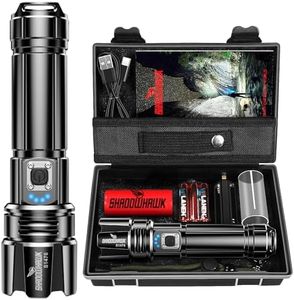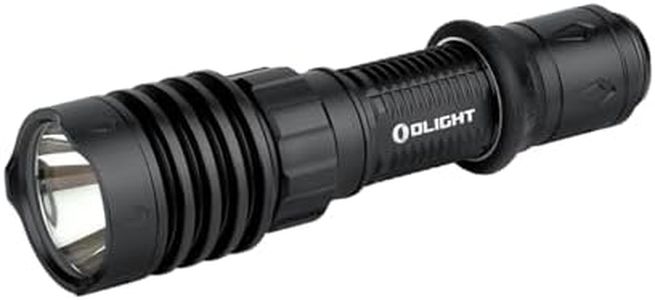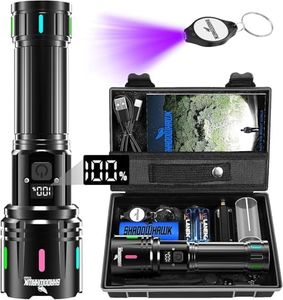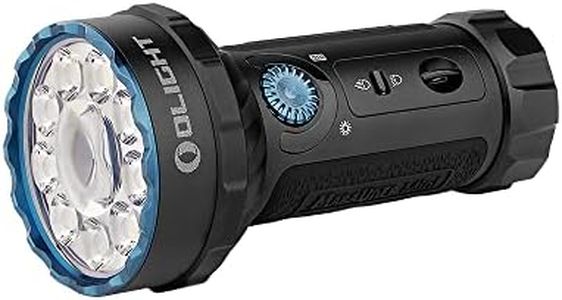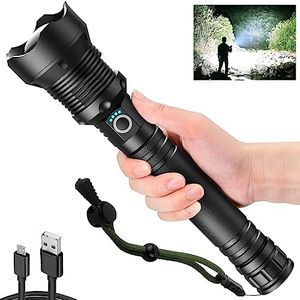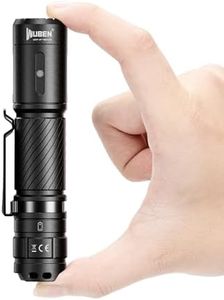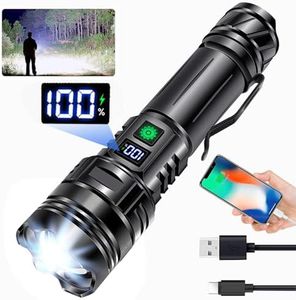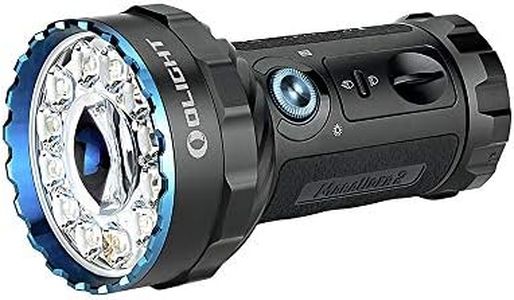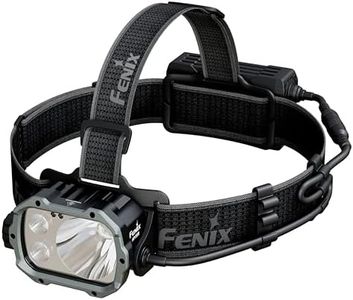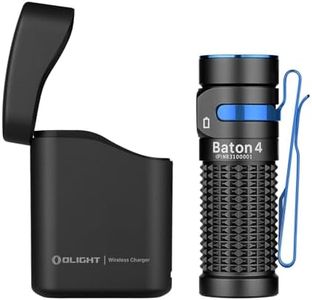We Use CookiesWe use cookies to enhance the security, performance,
functionality and for analytical and promotional activities. By continuing to browse this site you
are agreeing to our privacy policy
10 Best Powerful Flashlights
From leading brands and best sellers available on the web.By clicking on a link to a third party's website, log data is shared with that third party.
Buying Guide for the Best Powerful Flashlights
When shopping for a powerful flashlight, it's all about choosing a tool that fits your activities, whether it's hiking, emergency use, working outdoors, or everyday carry. The right model should balance brightness with battery life, and be comfortable to hold and use in the situations you expect to encounter. Before diving into technical details, think about where and how you’ll use your flashlight. For example, emergency kits might need long battery life, while outdoor adventures may call for more ruggedness and brightness.Brightness (Lumens)Brightness, measured in lumens, tells you how much light the flashlight emits. More lumens mean a brighter light. Flashlights can range from less than 100 lumens (for simple tasks) up to thousands for very powerful models. For general household use, 100-300 lumens is usually enough. For outdoor activities or security, consider 500-1000+ lumens. If you are often in dark, open spaces, or need to reach a far distance, go higher. However, remember that higher brightness drains battery faster and can cause glare in close spaces.
Beam DistanceBeam distance measures how far the light will shine before its brightness drops to the level of a full moon on a clear night, which is considered usable. A short beam distance (up to 50 meters) is suitable for indoor or close working. Mid-range (50-200 meters) is good for most outdoor uses. A long beam (200+ meters) is needed for search, rescue, or navigating wide open spaces. Pick based on your typical environment—walking the dog needs less distance than hiking or search operations.
Battery Type and LifeConsider the type of batteries used (disposable or rechargeable) and how long the flashlight works at different brightness levels. Disposable batteries are easy to replace but could be less eco-friendly and more expensive over time. Rechargeable batteries save money and reduce waste, but need access to charging. Battery life can range from less than an hour at peak brightness to dozens of hours on lower settings. If you need longer use between charges or replacements, look for models with efficient modes or larger battery capacities.
Durability and Water ResistanceA powerful flashlight should handle drops and bumps, especially in outdoor or work settings. Durability often depends on the materials used—aluminum and tough plastics are common. Water resistance is rated (often as IPX), with higher numbers offering better protection. IPX4 can handle splashes, IPX7 and up can handle full submersion. If you'll use your flashlight in rough or wet environments, pick one that’s both drop-resistant and waterproof.
Size and WeightThe size and weight of a flashlight influence portability and handling comfort. Compact models are easy to carry every day or pocket, while larger models might offer more power and battery but can be bulky. For home or car kits, bigger sizes work well. For hiking or everyday use, lighter models are better. Choose a size that feels comfortable to hold and convenient to carry given how and where you'll use it.
Modes and FeaturesMany powerful flashlights come with multiple brightness settings, strobe or SOS functions, and adjustable focus. More modes allow you to save battery or tailor the light to your needs (for example, using a low mode for reading or a strobe in emergencies). Simpler flashlights with just one or two modes are easier for quick use. If you like flexibility and control, opt for models with more settings; for simplicity, choose straightforward designs.

